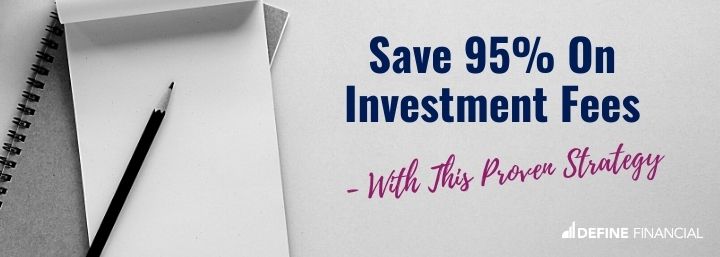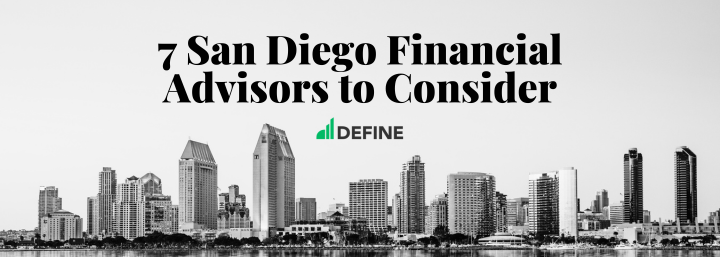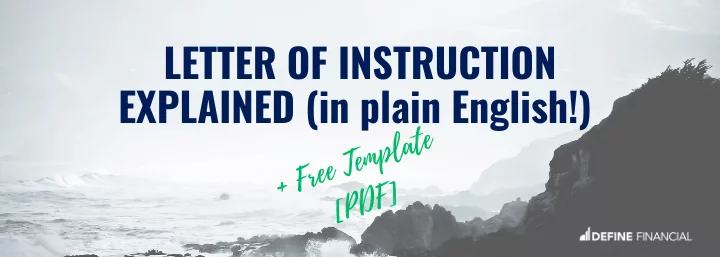
If you’re anything like me, you’ve snagged some pretty awesome stuff on sale, especially around the holidays.
What if I told you it was possible to get a crazy deal on something you want – and to heck with 20% off. How about 95% off?
Yes, you can actually save 95% on something you want, and it’s even more important than home improvement supplies or that huge TV.
I’m talking about the world of investing – a world where you can get plenty of discounts on investment fees if you know where to look.
Your future is very interested in this.
Types of Investment Fees
Before I talk about how to save money and score deep discounts in the world of investing, I want to clarify the many ways you actually spend money on investing.
Once we know how our money is spent, we can clearly see how to save it.
Sales Loads
If you’re buying an investment from a broker, chances are good you’re buying something that has a sales fee – also known as a load. Any investment with a sales load is terrible and you should run for the hills any time you encounter one.
No matter what anyone says, there’s no reason to pay a sales load on anything, for any reason, ever. If someone tells you otherwise, it’s probably because they are not a fiduciary (someone who has your best interests in mind).
Trade Fees
If you are a do-it-yourself investor, you may have to pay a trading fee. This could mean paying $3.95 to buy an exchange-traded fund (ETF), or $30 to buy a mutual fund.
But, you don’t have to pay this. Many brokerage firms give you access to their own funds (and sometimes other funds) without a trade fee.
One example of this is Vanguard. If you use Vanguard, you can buy Vanguard funds without a trade fee. The same goes for Charles Schwab and Fidelity. You can usually avoid trade fees with any of these firms as long as you use their funds.
If your goal is saving money, don’t go to Charles Schwab to buy a Vanguard fund, or vice-versa. Go straight to the source and you can save considerable sums of money over time.
Bid/Ask Spreads
A bid/ask spread is another type of investment fee you may encounter. When you buy a security, you need to buy it at a high enough price to make it worth someone’s time to sell it to you. The extra money you pay is called the spread.
You can avoid directly paying a spread when you invest using a mutual fund, although the mutual fund manager will have to pay the bid/ask spread themselves. Hopefully, the mutual fund manager knows enough to pay the lowest spread possible. Still, that’s never guaranteed.
With an ETF, you have to pay this spread fee twice. You’ll pay this cost when you buy the ETF, then pay it a second time when the ETF manager buys the investments that make up the ETF. When you buy a stock, you have to pay a trade fee and the bid/ask spread.
Want to save money? Purchasing a low-cost mutual fund directly from the company that issues it is one of the best-known ways to avoid all these fees.
Expense Ratios
This brings us to yet another way investing costs money – and a chance to save 95% on your investments.
Expense ratios are an ongoing fee you pay to use a fund to invest. Keep in mind, the fund can be a mutual fund or an ETF. Also keep in mind that expense ratios are expressed as a percentage (e.g. one percent).
Let’s use an example to illustrate how expense ratios work:
Jim invests $100 in a stock fund. The fund charges a 1% expense ratio. Assuming that the stock market returns nothing for an entire year, Jim’s investment is now worth $99. In year two (again with no market returns), Jim’s investment is now worth $98.01. And so on.
Expense ratios vary wildly. They can be as little 0.02% (e.g. $0.02 out of every $100) all the way up to 3% ($3 out of every $100).
All else being equal, a low expense ratio is better. A lower expense ratio means you’ll pay fewer fees and keep more of your money for yourself.
A Case Study in Investment Fees…or How to Save 95% When You Invest
Let’s consider a case study:
A client has a sizable position in a mutual fund with an expense ratio of 2.2%. While this high of an expense ratio isn’t uncommon, you can find many solid funds at a much lower rate.
So, after shopping around, the client decides to move from this mutual fund into a low-cost diversified portfolio with an aggregate expense ratio of 0.1%.
Can you guess what happens? That’s right – she saves 95% on investment fees each year!
The Bottom Line: Investment Fees
While you may never save 95% on home improvement projects or the newest TV, it is possible to save this much on certain investing fees with thoughtful planning.
If your goal is to get the best return on your investments you can, make sure you’re aware of the investment fees you are paying…and then how to avoid them.


